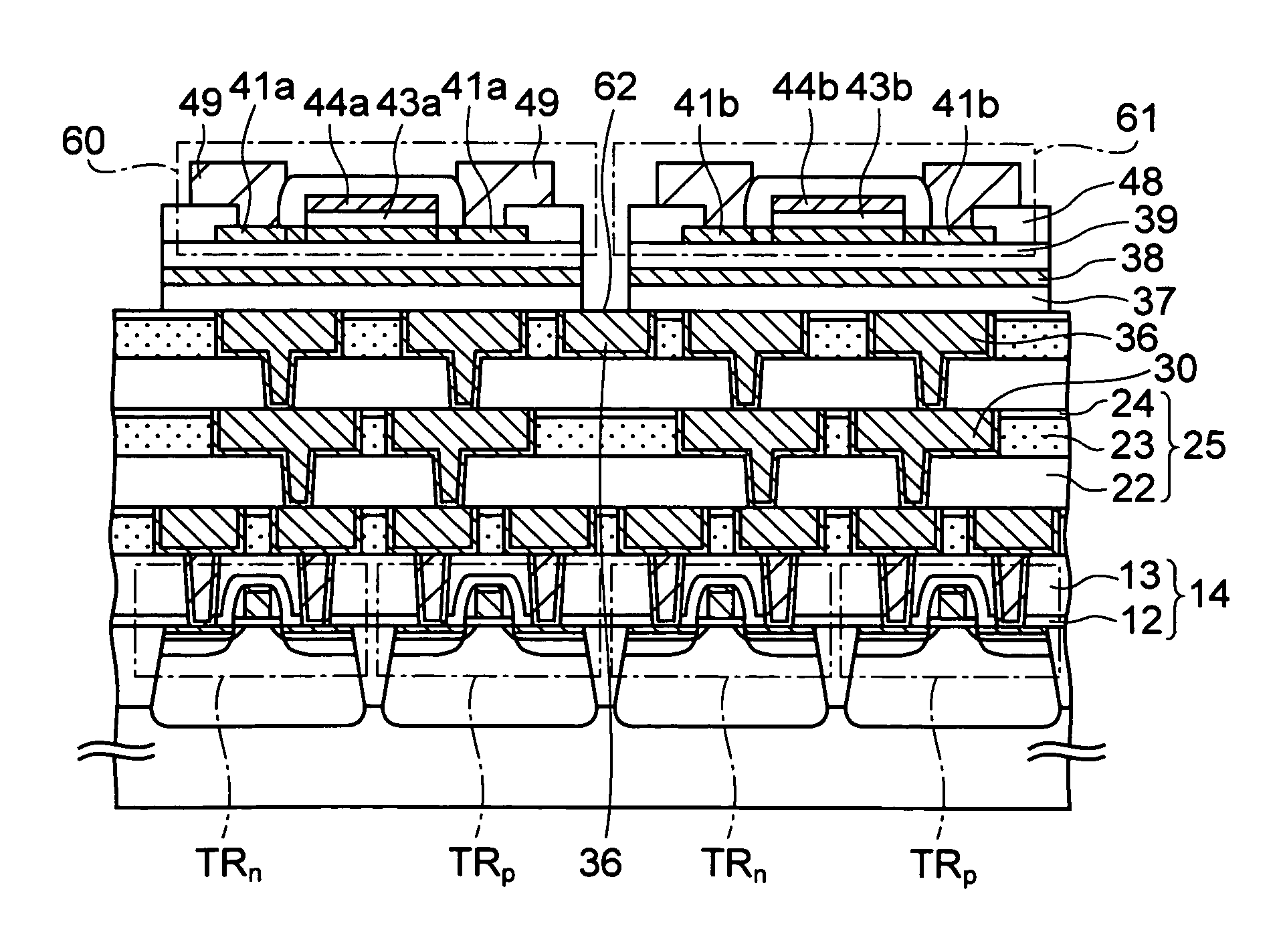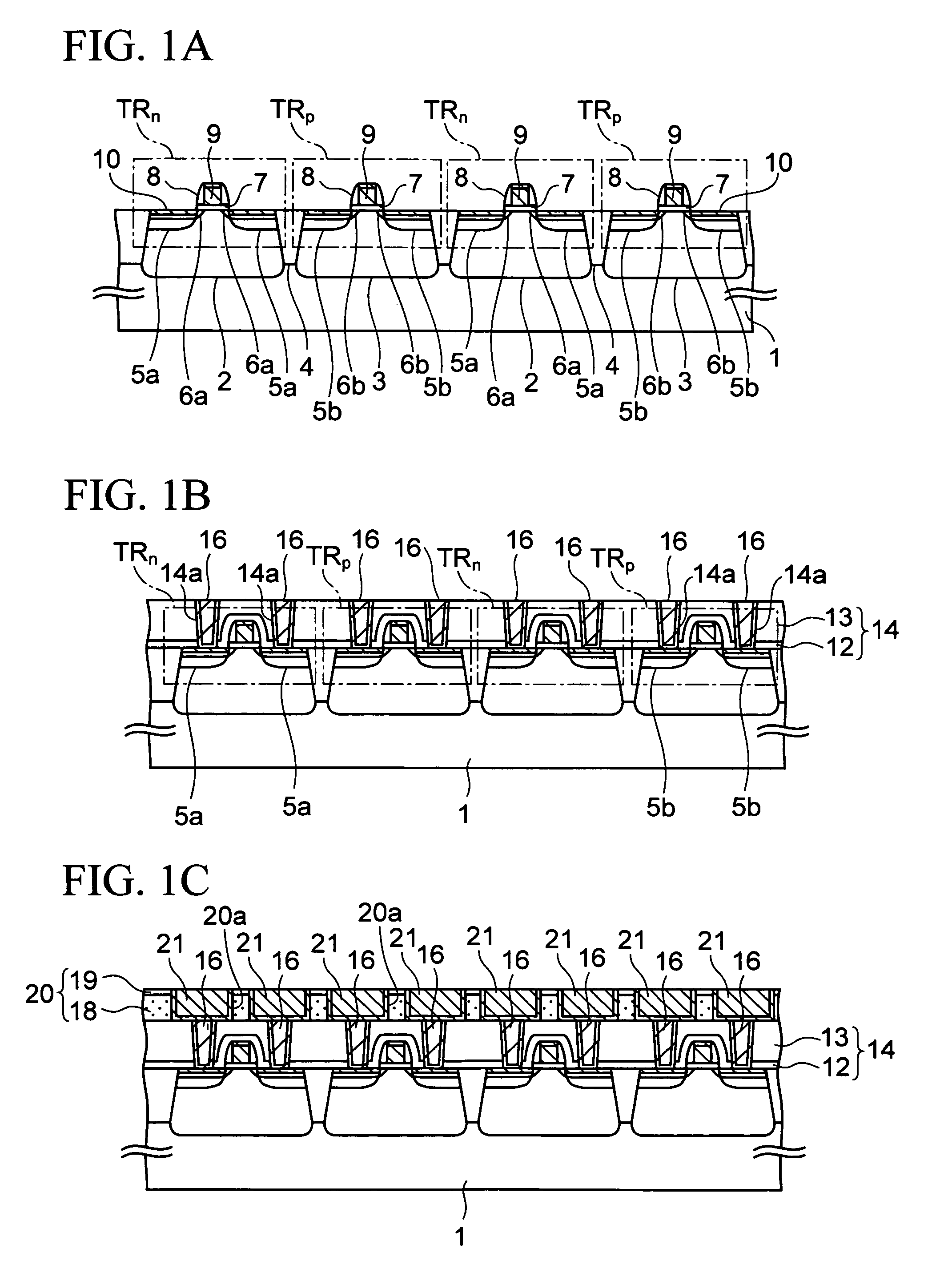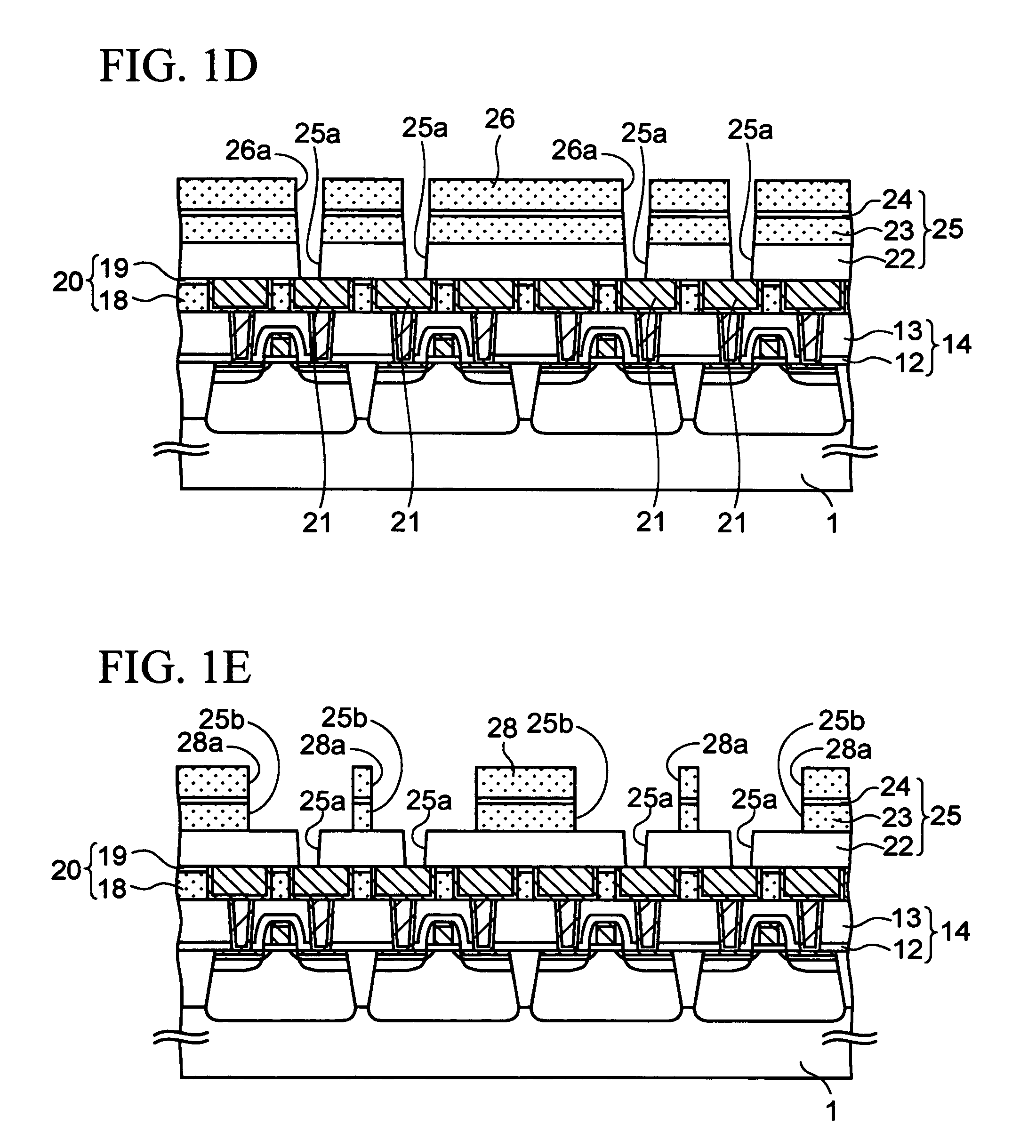Semiconductor device
a technology of semiconductor devices and insulating films, applied in semiconductor devices, semiconductor/solid-state device details, electrical apparatus, etc., can solve the problems of increasing power consumption, deterioration of interlayer insulating films and wiring by heat of energy beams, and new disadvantages caused by miniaturization, so as to prevent short-circuit between upper and lower copper wirings, prevent short-circuit, and improve heat resistan
- Summary
- Abstract
- Description
- Claims
- Application Information
AI Technical Summary
Benefits of technology
Problems solved by technology
Method used
Image
Examples
first embodiment
(1) First Embodiment
[0040]FIGS. 1A to 1S are cross-sectional views in the middle of manufacturing a semiconductor device according to a first embodiment of the present invention
[0041]First, description will be given of a step of obtaining a cross-sectional structure shown in FIG. 1A.
[0042]First, trenches for STI (shallow trench isolation) are formed in a silicon (semiconductor) substrate 1, and a silicon oxide film is buried in the trenches to obtain element isolation insulating films 4. Note that an element isolation structure is not limited to the STI but may be LOCOS (local oxidation of silicon). Thereafter, ion implantation of p-type impurities and n-type impurities is performed in transistor formation regions defined by the element isolation insulating films 4, thereby forming p wells 2 and n wells 3 in the silicon substrate 1.
[0043]Furthermore, after a silicon oxide film to be a gate insulating film 7 is formed by thermally oxidizing a surface of the silicon substrate 1, a gat...
second embodiment
(2) Second Embodiment
[0125]In the first embodiment, the metal film such as the Al film is formed as a shielding film 38 in the step of FIG. 1H. On the contrary, in this embodiment, a reflecting film is formed as the shielding film 38 in the following manner.
[0126]FIGS. 6A and 6B are cross-sectional views in the middle of manufacturing a semiconductor device according to this embodiment. Note that, in FIGS. 6A and 6B, the components described in the first embodiment are denoted by the same reference numerals as those in the first embodiment, and description thereof will be omitted below.
[0127]First, description will be given of a step of obtaining a cross-sectional structure shown in FIG. 6A.
[0128]First, after the structure of FIG. 1G has been obtained according to the first embodiment, a reflecting film is formed to have a thickness of about 50 to 500 nm as shown in FIG. 6A, the reflecting film being obtained by sequentially laminating a nitride film (SiN film) and an oxide film (Si...
third embodiment
(3) Third Embodiment
[0136]In the first embodiment as already described, TFTs 60 and 61 having the LDD structure and the offset gate structure are fabricated. Meanwhile, in this embodiment, TFTs having a GOLD (gate overlap lightly doped drain) structure are fabricated.
[0137]FIGS. 8A to 8F are cross-sectional views in the middle of manufacturing a semiconductor device according to this embodiment. Note that, in FIGS. 8A to 8F, the components described in the first embodiment are denoted by the same reference numerals as those in the first embodiment, and description thereof will be omitted below.
[0138]First, description will be given-of a step of obtaining a cross-sectional structure shown in FIG. 8A.
[0139]First, after the steps of FIGS. 1A to 1M described in the first embodiment have been performed, a silicon oxide film is formed to have a thickness of about 30 nm on the entire surface by use of a plasma CVD method using vaporized TEOS as reactive gas. The silicon oxide film thus for...
PUM
 Login to View More
Login to View More Abstract
Description
Claims
Application Information
 Login to View More
Login to View More - R&D
- Intellectual Property
- Life Sciences
- Materials
- Tech Scout
- Unparalleled Data Quality
- Higher Quality Content
- 60% Fewer Hallucinations
Browse by: Latest US Patents, China's latest patents, Technical Efficacy Thesaurus, Application Domain, Technology Topic, Popular Technical Reports.
© 2025 PatSnap. All rights reserved.Legal|Privacy policy|Modern Slavery Act Transparency Statement|Sitemap|About US| Contact US: help@patsnap.com



